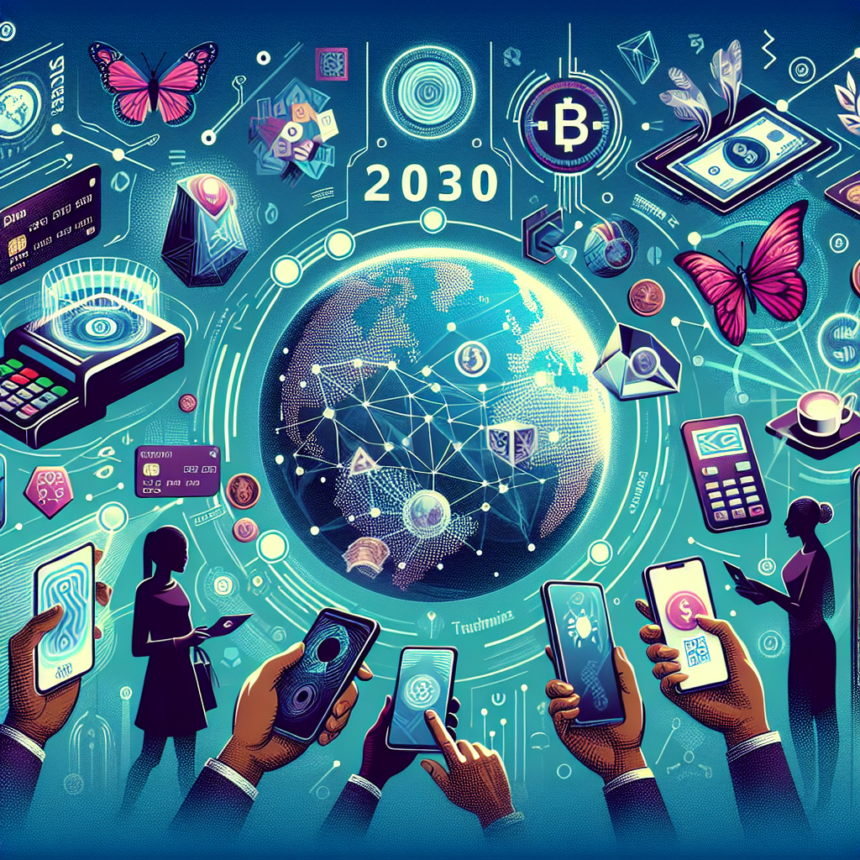As we move toward 2030, the landscape of digital payments is evolving at an unprecedented pace. The shift away from cash towards electronic payment systems is not just a trend; it’s a signal of a broader revolution that is changing the way we transact, save, and interact with commerce. By 2030, we can expect technology to redefine the payment experience in ways that enhance convenience, security, and inclusivity. This article explores the trajectories that digital payments are likely to take over the coming years.
A Seamless Payment Experience
By 2030, technology will have made transactions smooth and instantaneous. Imagine making a purchase with just a glance at your smart wearable device or a simple verbal command to your virtual assistant. Increasingly sophisticated biometric authentication methods like facial recognition, retina scans, or even voice recognition will allow consumers to pay swiftly and securely without the need for PINs or passwords. Payment friction will be minimized, leading to more spontaneous purchases and an overall enhanced consumer experience.
Blockchain and Cryptocurrency Integration
The integration of blockchain technology will also play a pivotal role in transforming digital payments by 2030. Blockchain can make transactions transparent, secure, and efficient by eliminating intermediaries and reducing transaction costs. The rise of cryptocurrencies—be it Bitcoin, Ethereum, or Central Bank Digital Currencies (CBDCs)—will create an ecosystem where consumers will have more payment options than ever before. As regulatory frameworks develop, public trust in digital currencies will grow, allowing them to be adopted more widely.
Financial Inclusion
One notable benefit of advancements in digital payment technology is increased financial inclusion. By 2030, we will likely witness significant efforts to provide access to banking for the unbanked population. Mobile payment systems and digital wallets, powered by technologies like 5G and the Internet of Things (IoT), will enable people in remote and underserved areas to transact seamlessly. Initiatives that utilize mobile technology to create micro-lending opportunities will also empower small-scale entrepreneurs, fostering economic growth and stability in communities.
Artificial Intelligence and Machine Learning
Artificial Intelligence (AI) and Machine Learning (ML) will not only streamline payment systems but also bolster security measures. Fraud detection algorithms will use AI to analyze transaction patterns in real-time, flagging suspicious activities before any harm is done. Consumers can enjoy a heightened sense of security with instant alerts and automated responses to potential threats. Personalized marketing based on spending habits will also allow businesses to offer tailored deals, enhancing the customer experience and increasing engagement.
Enhanced Regulatory Frameworks
With the rapid advancement of technology in the financial sector comes the necessity for a comprehensive regulatory framework. By 2030, we can expect policymakers to develop rules that govern everything from transaction limits for cryptocurrencies to data privacy regulations that protect consumer information. Governments will work alongside financial institutions to ensure that innovation occurs within an ethical framework, maintaining consumer trust while promoting financial technology.
Sustainability in Payments
As awareness of environmental issues increases, the payments industry will also seek sustainable alternatives. In 2030, we can anticipate a shift toward eco-friendly payment solutions—perhaps utilizing blockchain technologies for carbon offsetting. Financial institutions will likely adopt green policies that not only track carbon footprints but offer incentives for sustainable spending behaviors, aligning profit with purpose.
Conclusion
Digital payments in 2030 promise to be more convenient, secure, and inclusive than ever before. As technology continues to evolve, the ways in which we handle transactions will undergo a profound change. The combination of AI, blockchain, and mobile technology will create an ecosystem that promotes seamless experiences, increased access to financial services, and sustainable practices. The transformation is not just a couple of innovations; it’s a holistic reshaping of how we perceive and implement financial transactions in our daily lives.
FAQs
Q1: How will biometric payments work?
A1: Biometric payments authenticate users through physical characteristics like fingerprints, facial recognition, or voice patterns. This method eliminates the need for PIN numbers, providing a faster and more secure transaction process.
Q2: Will cash still exist in 2030?
A2: While the use of cash will continue to decline, it may not entirely disappear. Certain demographics or regions might still prefer cash for its tangibility and the privacy it offers.
Q3: What role will cryptocurrencies play in digital payments by 2030?
A3: Cryptocurrencies are expected to be more mainstream, supported by regulatory frameworks that bolster consumer confidence. They will likely coexist with traditional currencies, providing additional payment options.
Q4: How will technology enhance security in digital payments?
A4: Artificial Intelligence and machine learning will enhance security by monitoring transaction patterns, detecting anomalies, and preventing fraud in real time, leading to safer transactions.
Q5: What is financial inclusion, and why is it important?
A5: Financial inclusion refers to providing equitable access to financial services for all, including the unbanked population. It is essential for fostering economic growth and reducing poverty.









